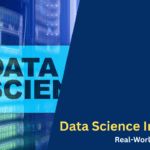The Future of Power Systems: Smart Grids
Hello, guys, welcome to our blog. Here in this article, we will discuss “The Future of Power Systems: Smart Grids”.
Ask questions if you have any electrical, electronics, or computer science doubts. You can also catch me on Instagram – CS Electrical & Electronics.
Also, read:
- What is XCP (Universal Measurement and Calibration Protocol)? Introduction, Working, Purpose, Applications
- What Is SIL Testing, Software-In Loop, Working, Purpose
- UDS (Unified Diagnostic Services) Tutorials For Automotive Engineers
What is a Smart Grid?
Smart grids stand at the forefront of revolutionizing traditional power systems, offering a sophisticated and interconnected approach to electricity generation, distribution, and consumption. Unlike conventional grids, smart grids integrate advanced technologies, digital communication, and intelligent systems to optimize the flow of energy, enhance reliability, and promote sustainability.
At the heart of smart grids is incorporating two-way communication systems that enable seamless interaction between utility providers and end-users. This real-time exchange of information empowers utilities to monitor grid performance, respond swiftly to disruptions, and make informed decisions for efficient energy management.
Advanced Metering Infrastructure (AMI) is a fundamental component of smart grids, deploying smart meters to provide accurate and real-time measurement of energy consumption. This not only enables utilities to gather precise data but also empowers consumers with insights into their energy usage patterns, fostering a culture of informed decision-making.
Grid automation plays a pivotal role in the smart grid ecosystem. Automated control systems and sensors enable the grid to autonomously monitor its health, identify faults, and respond dynamically to changes in demand or supply. This level of automation contributes to grid resilience, reducing downtime, and ensuring a rapid response to disturbances or outages.
Smart grids facilitate the integration of renewable energy sources, such as solar and wind power, into the energy mix. By effectively managing the intermittency of renewables through forecasting and adaptive control mechanisms, smart grids play a crucial role in transitioning to a cleaner and more sustainable energy landscape.
Distributed Energy Resources (DERs), including solar panels, energy storage systems, and electric vehicles, find seamless integration within smart grids. These resources can be intelligently controlled and coordinated to contribute to grid stability and efficiency, supporting a more decentralized and resilient energy infrastructure.
Furthermore, smart grids enable demand response programs, allowing consumers to adjust their electricity usage in response to price signals or grid conditions. This flexibility empowers consumers, improves grid efficiency, and helps utilities manage peak loads more effectively.
As cyber threats become more sophisticated, smart grids prioritize robust cybersecurity measures. Protection against cyber-attacks is integral to safeguarding critical infrastructure, ensuring the privacy of consumer data, and maintaining the overall integrity of the grid.
In essence, smart grids represent a dynamic shift from traditional power systems, embodying adaptability, intelligence, and sustainability. Their integration of advanced technologies not only enhances grid performance but also lays the foundation for a resilient and future-ready energy infrastructure capable of meeting the evolving needs of a rapidly changing world.
Future of Power Systems: Smart Grids
The future of power systems lies in the evolution toward smart grids—a transformative approach to managing, distributing, and optimizing electricity delivery. Smart grids represent a significant advancement over traditional electrical grids by integrating cutting-edge technologies to enhance efficiency, reliability, and sustainability. Here are key aspects that highlight the future potential of smart grids:
01. Advanced Monitoring and Control:
Smart grids leverage advanced monitoring and control systems that enable real-time monitoring of electricity usage, grid performance, and equipment health. This level of visibility allows utilities to identify issues promptly, respond to outages more efficiently, and optimize the overall grid operation.
02. Integration of Renewable Energy:
The increasing adoption of renewable energy sources, such as solar and wind, poses challenges for grid operators due to their intermittent nature. Smart grids facilitate seamless integration by intelligently managing the variability of renewable energy generation, balancing supply and demand, and enhancing grid resilience.
03. Distributed Energy Resources (DERs):
Smart grids empower the integration of distributed energy resources, including solar panels, energy storage systems, and electric vehicles. These resources can be intelligently controlled and coordinated within the grid, allowing consumers to actively participate in energy generation and consumption.
04. Demand Response and Flexibility:
Smart grids enable demand response programs that incentivize consumers to adjust their electricity usage during peak demand periods. This flexibility helps utilities better manage load distribution, reduce the need for costly infrastructure upgrades, and enhance the overall efficiency of the grid.
06. Enhanced Reliability and Resilience:
By leveraging automation and real-time data analytics, smart grids enhance the reliability and resilience of power systems. They can quickly detect and isolate faults, reroute power to minimize disruptions, and recover from outages more swiftly, ensuring a more robust and dependable electrical infrastructure.
07. Grid Intelligence with IoT and Sensors:
The Internet of Things (IoT) and sensors play a crucial role in smart grids, providing a network of interconnected devices that continuously collect and transmit data. This grid intelligence allows for predictive maintenance, efficient load balancing, and improved decision-making by utilities.
08. Cybersecurity Measures:
As smart grids rely heavily on digital communication and data exchange, ensuring cybersecurity is a top priority. Future smart grids will incorporate advanced cybersecurity measures to protect against potential threats and attacks, safeguarding critical infrastructure and ensuring the privacy of consumer data.
09. Electric Vehicle Integration:
With the rise of electric vehicles (EVs), smart grids play a pivotal role in supporting the integration of EV charging infrastructure. They enable smart charging solutions, demand forecasting for charging stations, and grid-friendly charging strategies to avoid overloading the system during peak times.
10. Energy Efficiency and Conservation:
Smart grids encourage energy efficiency and conservation by providing consumers with real-time information about their energy usage. This empowers consumers to make informed decisions, reduce energy waste, and contribute to sustainability goals.
11. Grid Flexibility and Adaptability:
Smart grids offer flexibility and adaptability to evolving energy landscapes. They can accommodate changes in energy generation sources, emerging technologies, and shifting consumer behaviors, ensuring a resilient and future-proof power infrastructure.
In summary, the future of power systems lies in the widespread adoption and development of smart grids. These grids are at the forefront of transforming the traditional electricity infrastructure into a dynamic, interconnected, and intelligent system that addresses the challenges of a rapidly changing energy landscape. The integration of advanced technologies, renewable energy sources, and increased consumer participation positions smart grids as a cornerstone for building sustainable, efficient, and resilient power systems.
Advantages of Smart Grid
Smart grids offer a range of advantages that contribute to a more efficient, reliable, and sustainable electrical infrastructure. Here are key advantages of smart grids:
01. Enhanced Reliability:
Smart grids incorporate advanced monitoring and control systems that enable rapid detection of faults, automatic isolation of affected areas, and quick restoration of power. This results in improved grid reliability and reduced downtime during outages.
02. Improved Energy Efficiency:
Through real-time monitoring and data analytics, smart grids provide insights into energy consumption patterns. This information allows utilities and consumers to identify and implement energy-saving measures, promoting overall energy efficiency.
03. Integration of Renewable Energy:
Smart grids seamlessly integrate renewable energy sources, such as solar and wind power, into the grid. They can manage the variability of renewable generation, balance supply and demand, and optimize the use of clean energy resources.
04. Distributed Energy Resources (DERs) Integration:
Smart grids support the integration of distributed energy resources, including solar panels, energy storage systems, and electric vehicles. DERs can be intelligently managed to enhance grid stability and reliability.
05. Demand Response and Load Management:
Smart grids enable demand response programs that allow consumers to adjust their electricity usage based on real-time pricing or grid conditions. This helps utilities manage peak loads, balance demand, and optimize grid performance.
06. Grid Resilience and Self-Healing:
With automation and advanced control systems, smart grids enhance grid resilience. They can quickly identify and isolate faults, reroute power, and minimize the impact of disruptions, contributing to a more resilient electrical infrastructure.
07. Cost Savings:
Smart grids can lead to cost savings for both utilities and consumers. Improved energy efficiency, reduced downtime, and optimized grid operations contribute to lower operational costs and potentially lower electricity bills for consumers.
08. Advanced Metering Infrastructure (AMI):
The deployment of smart meters as part of AMI allows for accurate measurement of energy consumption. This enables utilities to implement dynamic pricing strategies, encourage energy conservation, and provide consumers with detailed insights into their usage patterns.
09. Real-time Monitoring and Control:
Smart grids offer real-time monitoring and control capabilities, allowing utilities to respond swiftly to changing grid conditions. This capability is essential for maintaining grid stability and ensuring optimal performance.
10. Environmental Sustainability:
By integrating renewable energy sources, optimizing energy use, and reducing waste, smart grids contribute to environmental sustainability. They support the transition to a cleaner and more sustainable energy ecosystem.
11. Grid Intelligence and Predictive Maintenance:
The use of sensors and data analytics in smart grids enables grid intelligence. Predictive maintenance can be implemented, allowing utilities to identify potential issues before they lead to failures, reducing the need for reactive maintenance.
12. Cybersecurity Measures:
Smart grids incorporate robust cybersecurity measures to protect against potential threats and attacks. This ensures the integrity and security of critical infrastructure and sensitive data.
Disadvantages of Smart Grid
While smart grids offer numerous advantages, they also come with certain challenges and disadvantages. It’s important to consider these aspects to implement and manage smart grid technologies effectively. Here are some of the disadvantages associated with smart grids:
01. High Initial Costs:
The deployment of smart grid technologies involves significant upfront costs for the installation of advanced meters, sensors, communication infrastructure, and control systems. The initial investment can be a barrier for some utilities, especially smaller ones with limited budgets.
02. Complexity of Implementation:
Implementing smart grids involves the integration of complex technologies and communication systems. The deployment and integration of these components require careful planning, technical expertise, and coordination, leading to potential challenges during the implementation phase.
03. Security Concerns:
The increased reliance on digital communication and data exchange in smart grids raises cybersecurity concerns. The interconnected nature of smart grid components makes them vulnerable to cyber threats, including hacking, data breaches, and attacks on critical infrastructure.
04. Privacy Issues:
Smart grids collect detailed data on individual energy consumption patterns. Privacy concerns may arise as consumers may be uncomfortable with the collection, storage, and use of such granular information. Clear regulations and privacy policies are essential to address these concerns.
05. Dependency on IT Infrastructure:
Smart grids heavily rely on information technology (IT) infrastructure for data communication, monitoring, and control. System vulnerabilities, software glitches, or IT failures can impact the functionality of the smart grid, leading to potential disruptions.
06. Interoperability Challenges:
The integration of diverse technologies and equipment from different vendors can pose interoperability challenges. Ensuring seamless communication and compatibility among various components is crucial for the effective functioning of the smart grid.
07. Electric and Magnetic Field Exposure:
The deployment of advanced metering infrastructure (AMI) may lead to increased exposure to electric and magnetic fields. While research on the health effects of such exposure is inconclusive, concerns about potential health risks have been raised.
08. Limited Standardization:
The lack of standardized protocols and frameworks for smart grid technologies can lead to compatibility issues between different devices and systems. Standardization efforts are ongoing but may take time to achieve widespread adoption.
09. Job Displacement and Workforce Transition:
The automation and optimization brought by smart grids may lead to changes in job requirements within the utility sector. Some traditional roles may become obsolete, requiring workforce transition and retraining, which can be challenging.
10. Resistance to Change:
Consumers may resist the changes associated with smart grids, such as the introduction of dynamic pricing, demand response programs, or the installation of smart meters. Effective communication and education are crucial to address consumer concerns and gain acceptance.
11. Grid Vulnerability to Cyberattacks:
As smart grids become more interconnected, they become potential targets for cyberattacks. A successful cyberattack on a smart grid could have severe consequences, including service disruptions and potential damage to critical infrastructure.
12. Data Management and Storage Challenges:
The vast amount of data generated by smart grids requires robust data management and storage capabilities. Utilities must invest in systems capable of handling, processing, and securely storing large volumes of data efficiently.
This was about “The Future of Power Systems: Smart Grids “. I hope this article may help you all a lot. Thank you for reading.
Also, read:
- 10 Tips To Maintain Battery For Long Life, Battery Maintainance
- 10 Tips To Save Electricity Bills, Save Money By Saving Electricity
- 100 (AI) Artificial Intelligence Applications In The Automotive Industry
- 100 + Electrical Engineering Projects For Students, Engineers
- 1000+ Control System Quiz, Top MCQ On Control System
- 1000+ Electrical Machines Quiz, Top MCQs On Electrical Machines
- 1000+ MATLAB Simulink Projects For MTech, Engineering Students
- 50 Tips To Save Electricity At Home, Shop, Industry, Office
Author Profile
- Content Writer








